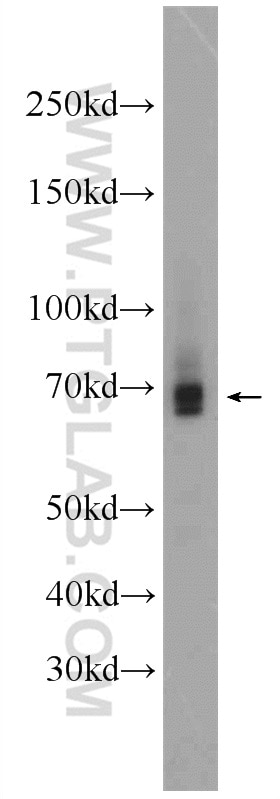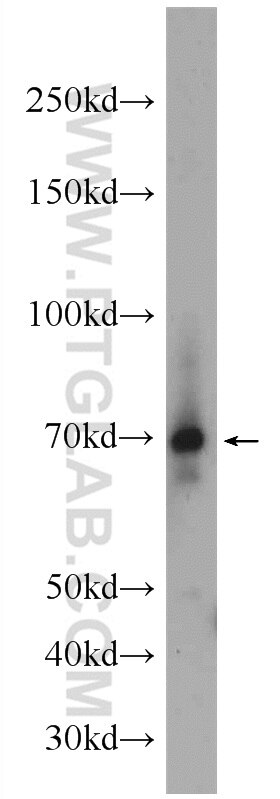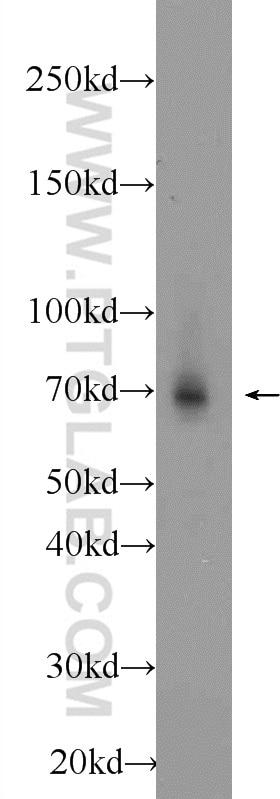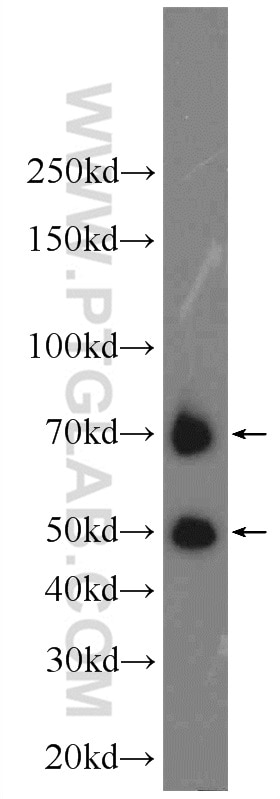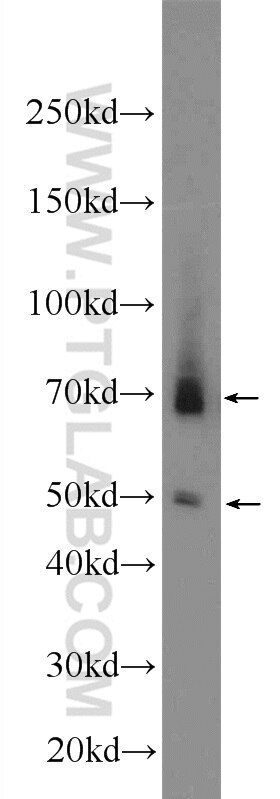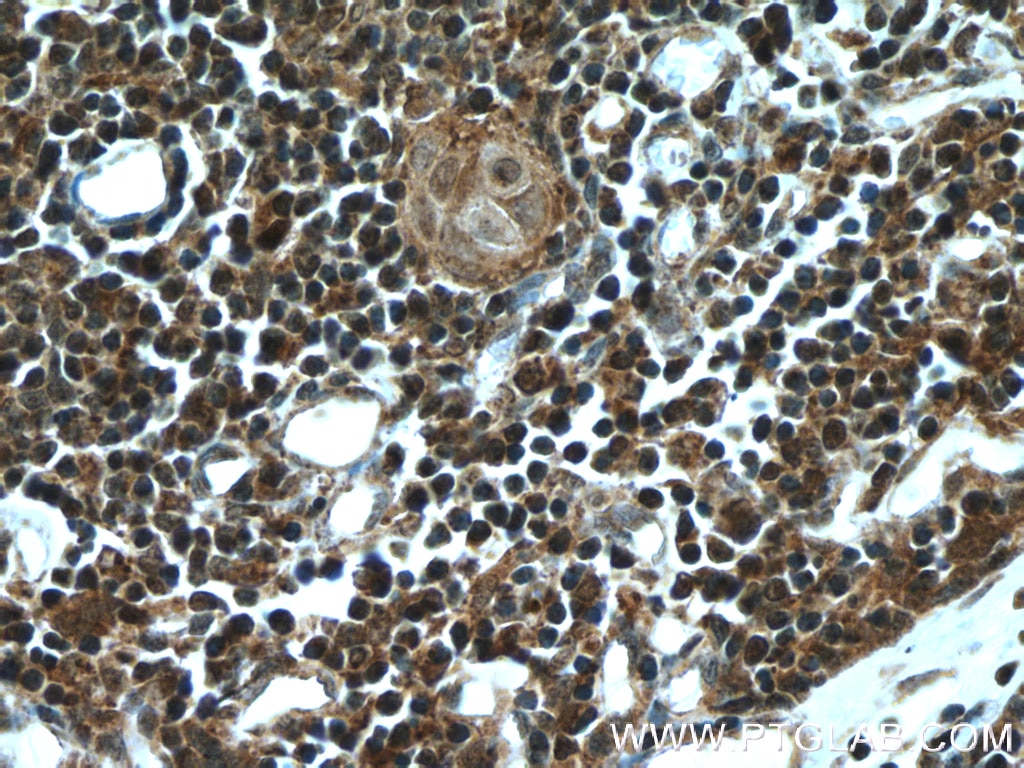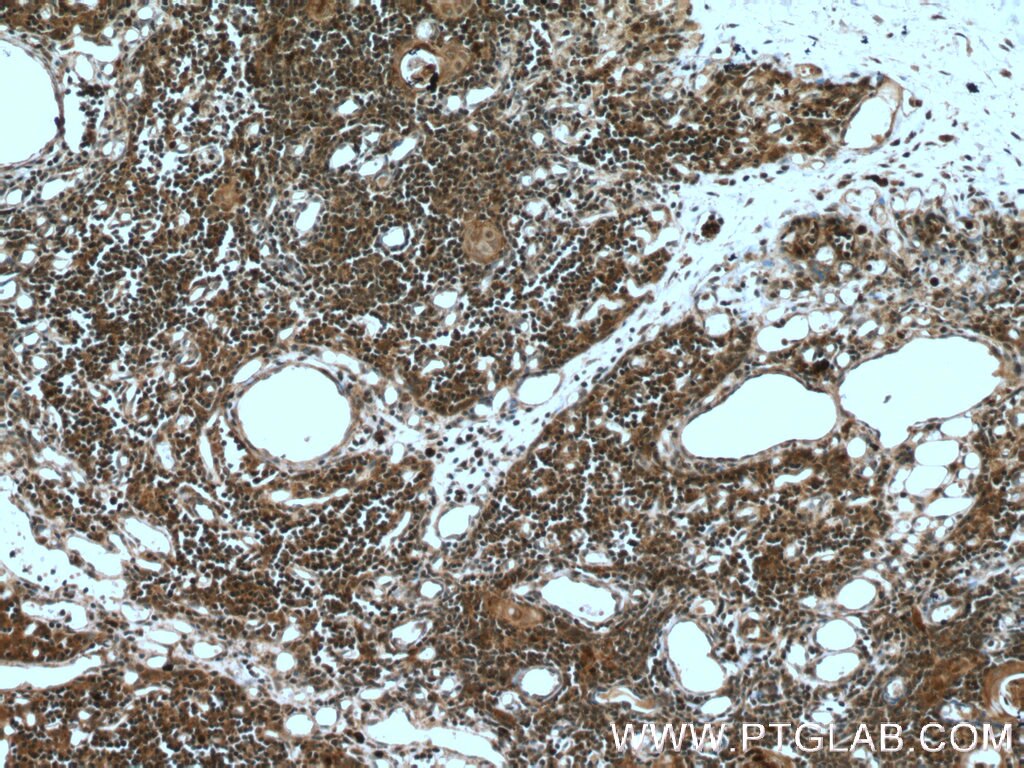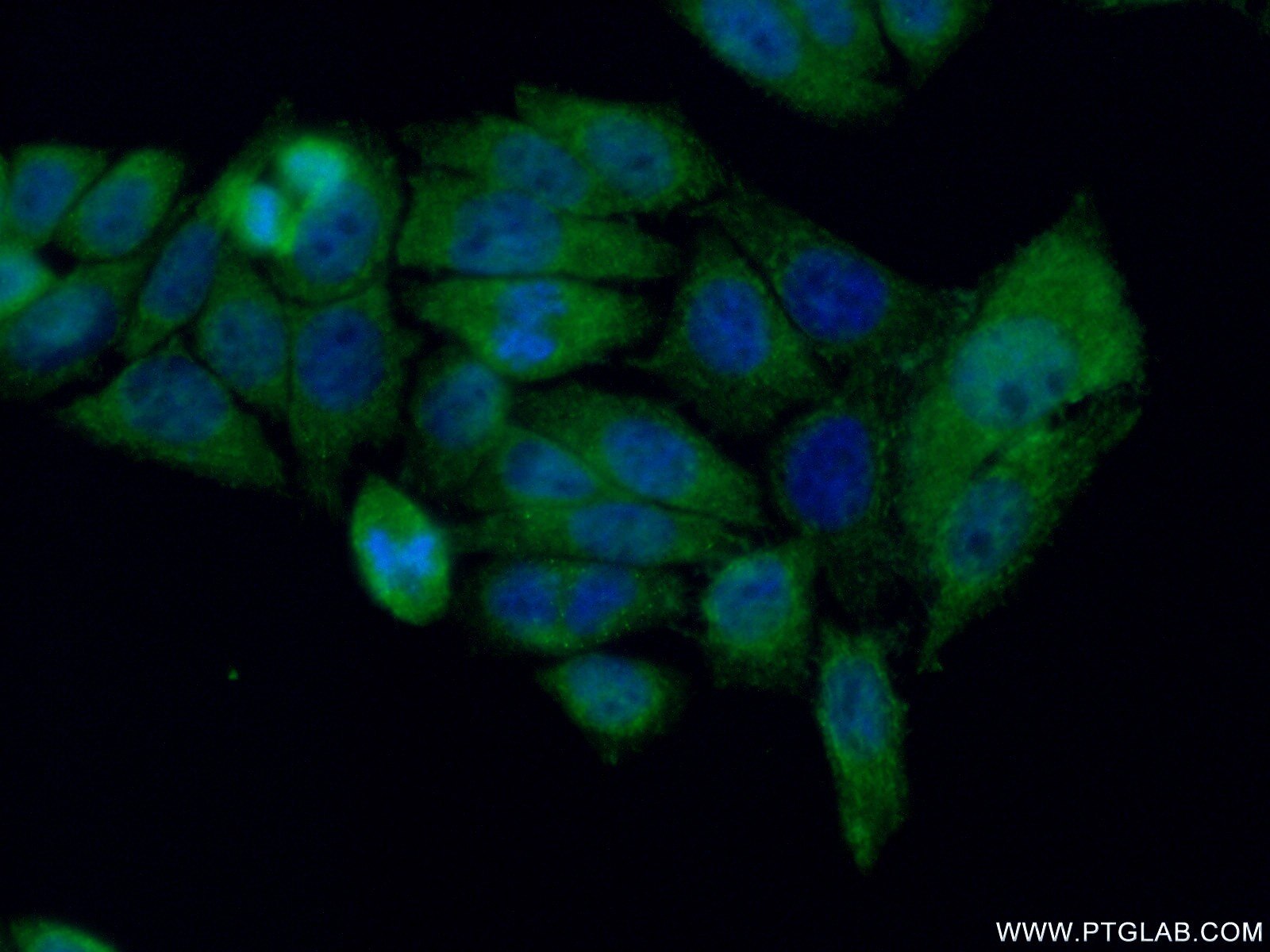AIRE Polyklonaler Antikörper
AIRE Polyklonal Antikörper für WB, IHC, IF/ICC, ELISA
Wirt / Isotyp
Kaninchen / IgG
Getestete Reaktivität
human, Maus
Anwendung
WB, IHC, IF/ICC, ELISA
Konjugation
Unkonjugiert
Kat-Nr. : 22517-1-AP
Synonyme
Geprüfte Anwendungen
| Erfolgreiche Detektion in WB | L02-Zellen, humanes Plasmagewebe, humanes Milzgewebe, Maus-Thymusgewebe, U-937-Zellen |
| Erfolgreiche Detektion in IHC | humanes Thymusgewebe Hinweis: Antigendemaskierung mit TE-Puffer pH 9,0 empfohlen. (*) Wahlweise kann die Antigendemaskierung auch mit Citratpuffer pH 6,0 erfolgen. |
| Erfolgreiche Detektion in IF/ICC | HeLa-Zellen |
Empfohlene Verdünnung
| Anwendung | Verdünnung |
|---|---|
| Western Blot (WB) | WB : 1:500-1:2000 |
| Immunhistochemie (IHC) | IHC : 1:50-1:500 |
| Immunfluoreszenz (IF)/ICC | IF/ICC : 1:50-1:500 |
| It is recommended that this reagent should be titrated in each testing system to obtain optimal results. | |
| Sample-dependent, check data in validation data gallery | |
Veröffentlichte Anwendungen
| WB | See 3 publications below |
| IHC | See 1 publications below |
| IF | See 1 publications below |
Produktinformation
22517-1-AP bindet in WB, IHC, IF/ICC, ELISA AIRE und zeigt Reaktivität mit human, Maus
| Getestete Reaktivität | human, Maus |
| In Publikationen genannte Reaktivität | human, Maus |
| Wirt / Isotyp | Kaninchen / IgG |
| Klonalität | Polyklonal |
| Typ | Antikörper |
| Immunogen | AIRE fusion protein Ag18249 |
| Vollständiger Name | autoimmune regulator |
| Berechnetes Molekulargewicht | 545 aa, 58 kDa |
| Beobachtetes Molekulargewicht | 58-69 kDa |
| GenBank-Zugangsnummer | BC137270 |
| Gene symbol | AIRE |
| Gene ID (NCBI) | 326 |
| Konjugation | Unkonjugiert |
| Form | Liquid |
| Reinigungsmethode | Antigen-affinitätsgereinigt |
| Lagerungspuffer | PBS with 0.02% sodium azide and 50% glycerol |
| Lagerungsbedingungen | Bei -20°C lagern. Nach dem Versand ein Jahr lang stabil Aliquotieren ist bei -20oC Lagerung nicht notwendig. 20ul Größen enthalten 0,1% BSA. |
Hintergrundinformationen
The function of the protein is not well defined, however it contains zinc finger motifs suggestive of a transcription factor. The protein (isoform 1) is localized to both the nucleus and cytoplasm. Three splice variant mRNAs products have been described [1]. The longer AIRE1 mRNA appears to be more abundant and includes exons 1 through 14. Splice variant AIRE2 includes a portion of the non-coding region of exon 1, an alternatively spliced longer exon 8, plus exons 9 through 14. Variant AIRE3 includes the same exon 1-8-9 sequences as found in AIRE2 but utilizes additional alternative splicing in exon 10 that shifts the reading frame such that a stop codon in exon 12 is utilized. The resulting protein products of these splice variants differ significantly. Defects in this gene cause the autosomal-recessive systemic autoimmune disease termed autoimmune polyendocrinopathy-candidiasis-ectodermal dystrophy (APECED).
Protokolle
| PRODUKTSPEZIFISCHE PROTOKOLLE | |
|---|---|
| WB protocol for AIRE antibody 22517-1-AP | Protokoll herunterladen |
| IHC protocol for AIRE antibody 22517-1-AP | Protokoll herunterladenl |
| IF protocol for AIRE antibody 22517-1-AP | Protokoll herunterladen |
| STANDARD-PROTOKOLLE | |
|---|---|
| Klicken Sie hier, um unsere Standardprotokolle anzuzeigen |
Publikationen
| Species | Application | Title |
|---|---|---|
Biochemistry (Mosc) Defective Central Immune Tolerance Induced by High-Dose D-Galactose Resembles Aging. | ||
Front Pharmacol Protective effects of Ganoderma lucidum spores on estradiol benzoate-induced TEC apoptosis and compromised double-positive thymocyte development |
